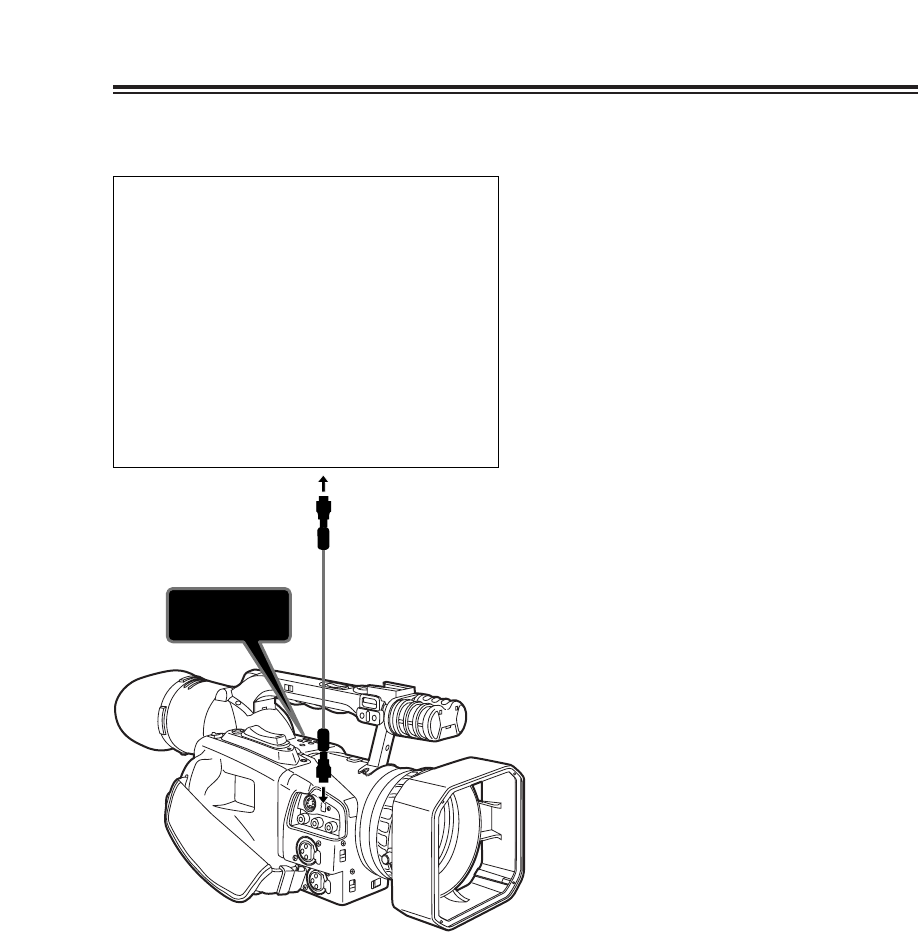
58 (E)
VCR REC
Connecting external components
OBefore recording signals from an external
component, check that the video signals are
input.
OWhen signals from an external component
are being recorded, do not stop the signal
output at the external component side or
disconnect any of the cables. It may not be
possible for the component to be recognized
when recording is resumed.
OWhen an IEEE 1394 cable has been
connected to the DV connector, do not apply
a strong load from outside. Doing so may
damage the connector.
OWhen signals are recorded using this unit,
audio signals will be recorded in the same
mode as the one which was set for the
playback tape regardless of the menu setting.
OWhen signals are recorded using this unit, the
bottom part of the images being monitored
(the images which are seen on an LCD
monitor, viewfinder or TV set) may be
distorted or they may shake vertically: this is
normal and not indicative of malfunctioning.
The images actually recorded are free of this
distortion and shaking.
OWhen images containing copy-guarded
signals (signals that protect copyrights) are
recorded using this unit, they will appear as
mosaic patterns when they are played back.
OIt may not be possible to input or output
digital signals to or from some components
even if the component concerned is equipped
with a DV connector. For details, refer to the
operating instructions of the component to be
connected.
$
A digital video component equipped with a
DV connector can be connected for
digitally recording and playing back video
and audio signals as well as time codes,
etc.
$
When signals from an external component
are to be recorded, set the unit to the VCR
mode and operate the VCR REC button to
initiate recording.
O The functions provided for the input
connectors and the ones provided for the
output connectors are switched
automatically.
Inputting to and outputting from
digital components


















